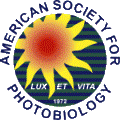Journal list menu
Export Citations
Download PDFs
Table of Contents
Full Access
full
Singlet Oxygen Oxidation of Isolated and Cellular DNA: Product Formation and Mechanistic Insights
- First Published: 30 April 2007
Full Access
full
Suppressive Effect of Caffeic Acid and its Derivatives on the Generation of UVA-induced Reactive Oxygen Species in the Skin of Hairless Mice and Pharmacokinetic Analysis on Organ Distribution of Caffeic Acid in ddY Mice
- First Published: 28 June 2008
Full Access
full
Photosensitizing Potential of Ciprofloxacin at Ambient Level of UV Radiation
- First Published: 05 July 2007
Full Access
full
The Microenvironment of DNA Switches the Activity of Singlet Oxygen Generation Photosensitized by Berberine and Palmatine
- First Published: 05 November 2007
Full Access
full
Genotoxicity of Combined Exposure to Polycyclic Aromatic Hydrocarbons and UVA—A Mechanistic Study
- First Published: 28 August 2008
Free Access
free
Advanced Glycation Endproducts Induce Photocrosslinking and Oxidation of Bovine Lens Proteins Through Type-I Mechanism
- First Published: 16 January 2009
Full Access
full
Monitoring Singlet Oxygen and Hydroxyl Radical Formation with Fluorescent Probes During Photodynamic Therapy
- First Published: 31 August 2009
Full Access
full
Photochemistry of Bacteriochlorophylls in Human Blood Plasma: 2. Reaction Mechanism Investigated by Product Analysis and Deuterium Isotope Effect
- First Published: 01 March 2010
Full Access
full
Effect and Mechanism of a New Photodynamic Therapy with Glycoconjugated Fullerene
- First Published: 19 November 2010
Full Access
full
A Theoretical Elucidation on the Solvent-dependent Photosensitive Behaviors of C60
- First Published: 30 April 2007
Full Access
full
Chemiluminescence Associated with Singlet Oxygen Reactions with Amino Acids, Peptides and Proteins†
- First Published: 09 May 2007
Full Access
full
Singlet Oxygen Reacts with 2′,7′-Dichlorodihydrofluorescein and Contributes to the Formation of 2′,7′-Dichlorofluorescein
- First Published: 28 August 2008
Full Access
full
Photosensitized Oxidation of Hypoxanthine and Xanthine by Aluminum Phthalocyanine Tetrasulfonate. Role of the Alkylating Quinone 2,5-Dichloro-diaziridinyl-1,4-benzoquinone
- First Published: 03 November 2008
Full Access
full
Time-resolved Luminescence and Singlet Oxygen Formation After Illumination of the Hypericin–Low-density Lipoprotein Complex
- First Published: 22 April 2009
Full Access
full
Effect of Oxygen Concentration on Photo-oxidation and Photosensitizer Bleaching in Butter
- First Published: 22 April 2009
Full Access
full
Oxygen Uptake in the Vitamin B2-sensitized Photo-oxidation of Tyrosine and Tryptophan in the Presence of Uracil: Kinetics and Mechanism
- First Published: 31 August 2009
Full Access
full
Photosensitized Oxidation of Tetrabromobisphenol A by Humic Acid in Aqueous Solution†
- First Published: 22 October 2009
Full Access
full
Stability of Flavonoids in the Presence of Riboflavin-photogenerated Reactive Oxygen Species: A Kinetic and Mechanistic Study on Quercetin, Morin and Rutin
- First Published: 07 July 2010
Full Access
full
Photoinduced Superoxide Radical Anion and Singlet Oxygen Generation in the Presence of Novel Selenadiazoloquinolones (An EPR Study)
- First Published: 06 October 2010




